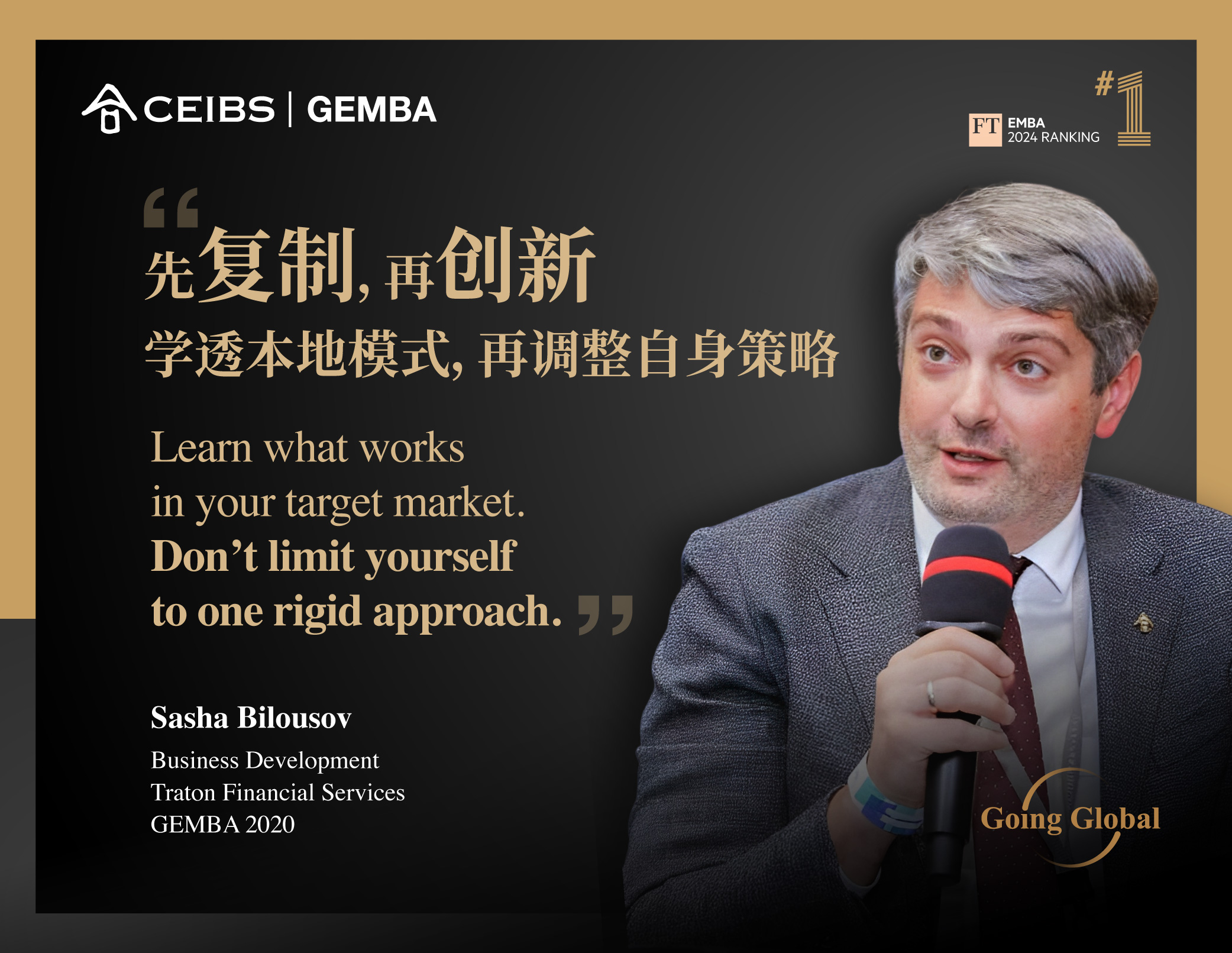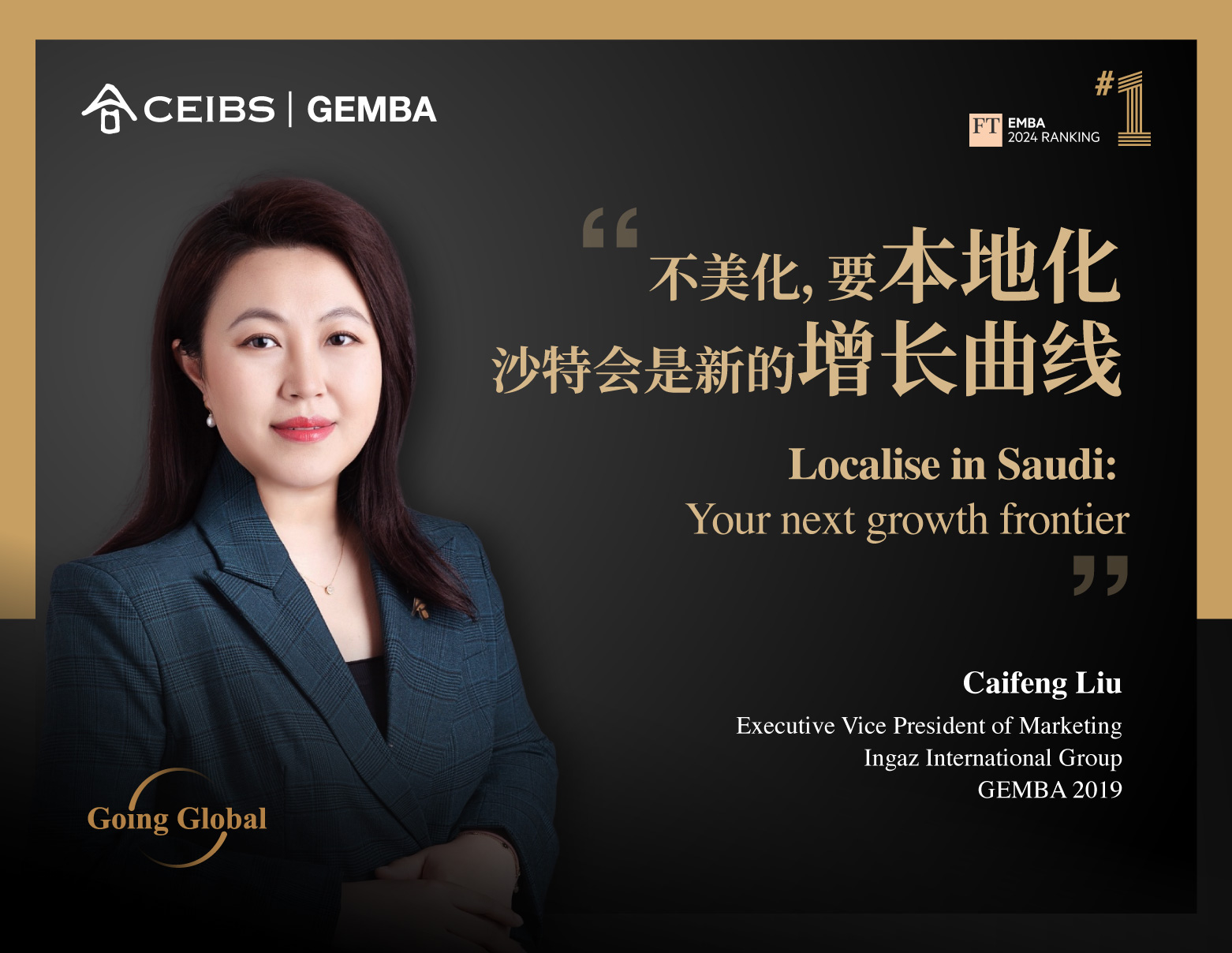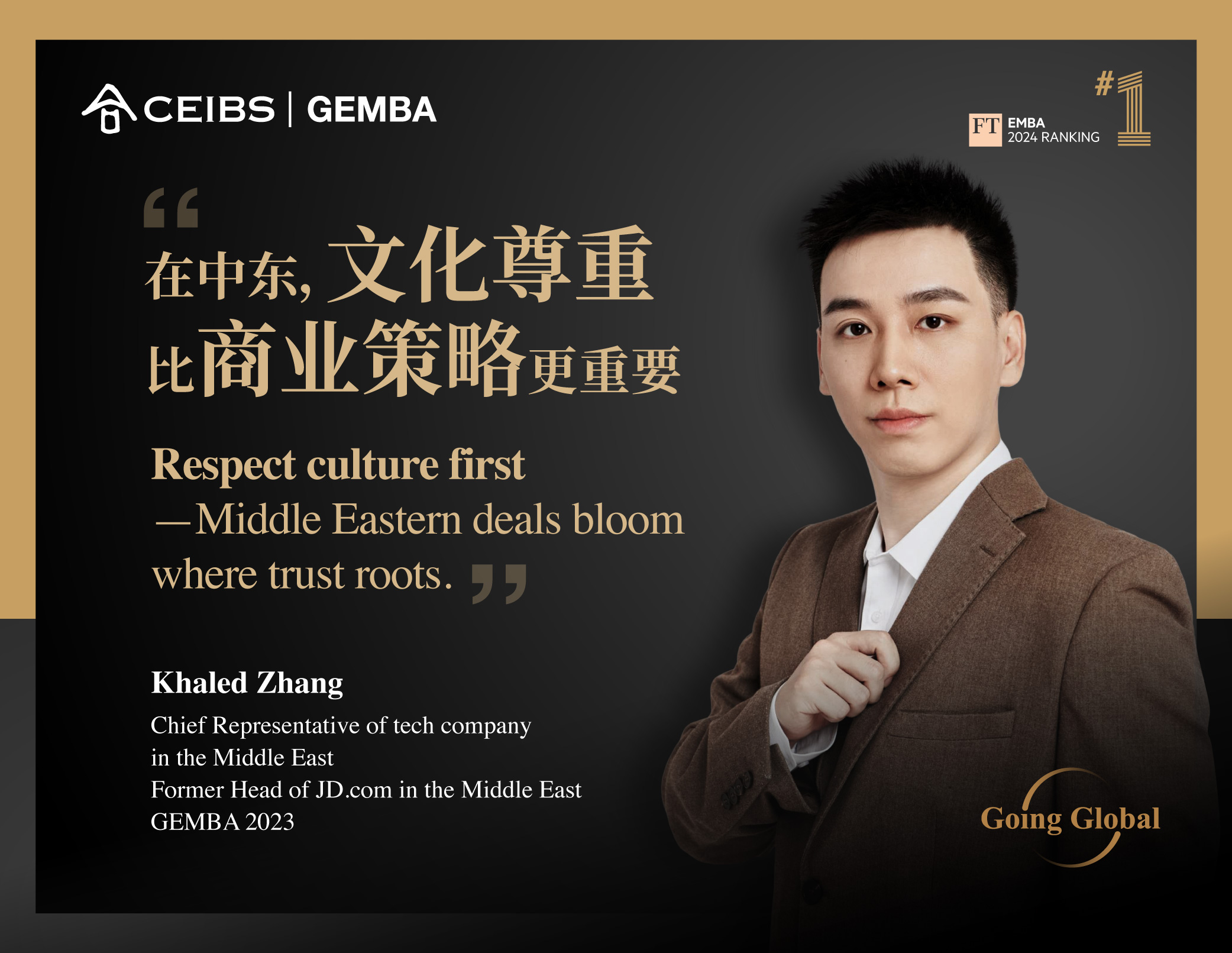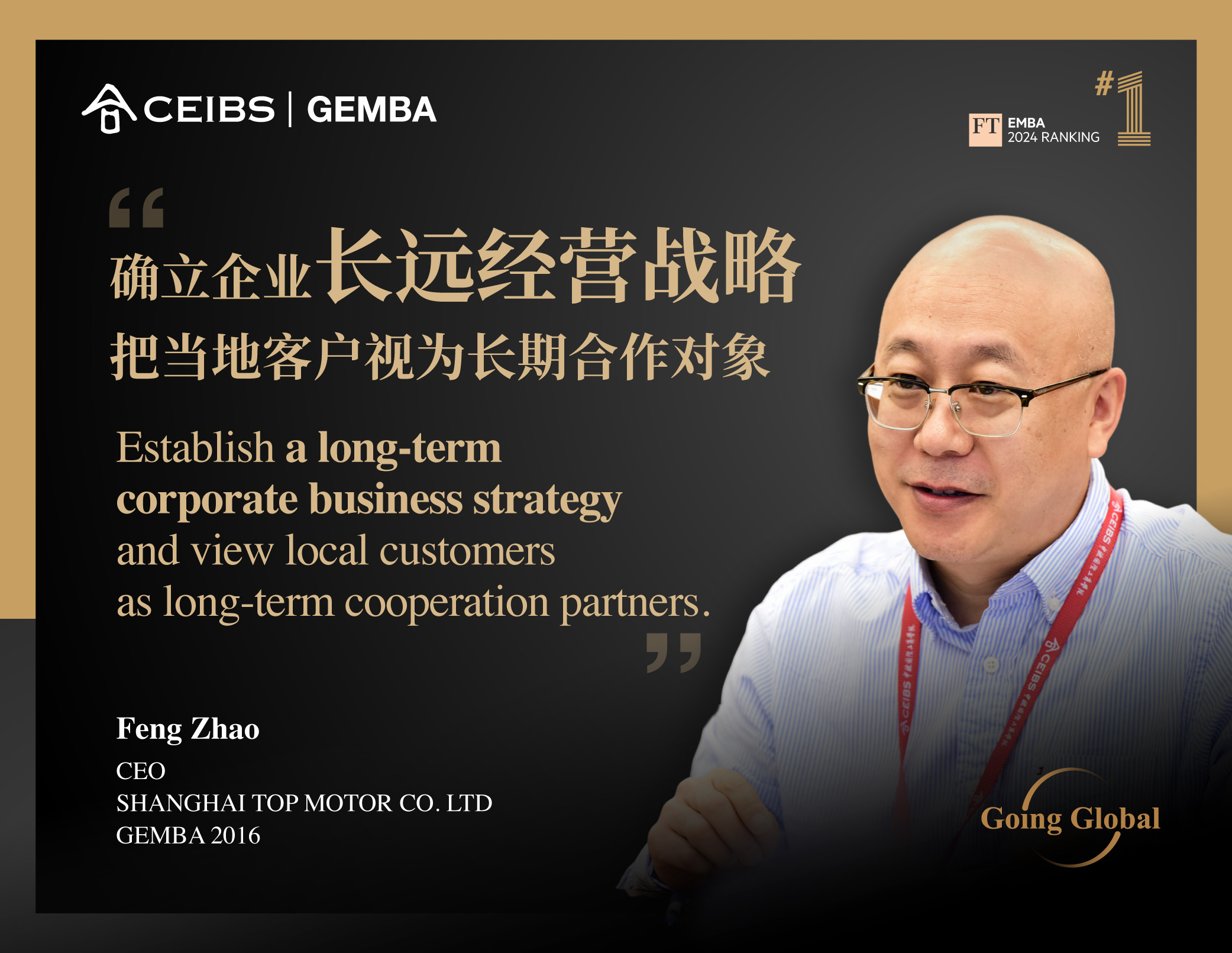Doing Business in the Middle East

It’s a “Crossroads Region” where East meets West. Its economies are dynamic, and it possesses a willingness to absorb international capital and new ideas. Overall, the Middle East has plenty to recommend itself as a prospect for companies’ ambitions of ‘Chu Hai ’ (expanding overseas).
To outline exactly what makes ME markets so desirable for Chinese firms, five CEIBS Global EMBA alumni agreed to share their unique insights won from firsthand experience in the region. Drawn from five diverse industries, each of the alums has a unique perspective on Middle Eastern business culture, market conditions, regulatory landscapes and other crucial considerations that any company eyeing the region must address before making their move.
01:What makes the Middle East Attractive to firms?
FENG ZHAO
CEO
SHANGHAI TOP MOTOR CO. LTD
GEMBA 2016
The ME market landscape is undergoing significant structural transformation; electric motors are essential for the region’s drives into new energy, tech-based intelligence, and automation. Our market strategy has evolved from mere sales to forging strategic partnerships with Middle Eastern clients to achieve value co-creation.
Renee Zhong
CEO
Truss UAE
GEMBA 2018
As China’s role in global affairs expands, conflicts with the Western world (due to significant differences in core values) are inevitable. I sought a region that often maintains a neutral stance between East and West, and is currently undergoing a phase of rapid economic development. The UAE met these conditions perfectly; choosing to establish roots here was a natural progression.
Caifeng Liu
Executive Vice President of Marketing
Ingaz International Group
GEMBA 2019
Middle Eastern economies hold tremendous potential for Chinese companies if they come with rational expectations and a desire to make respectful long-term partnerships and localisation efforts. Don’t think of the Middle East as ‘easy money’, because it’s not. However, there is plenty of access to capital, and strong political support for investing in tech-based transformation efforts.
Khaled Zhang
Former Head of JD.com in the Middle East
Chief Representative of tech company
GEMBA 2023
Most Middle Eastern countries show a strong interest and open attitude towards technological innovation, especially welcoming high-tech companies from China and Europe. They have some sizeable gaps in manufacturing and R&D, and are highly motivated to catch up by learning from other leading global economies.
Sasha Bilousov
Business Development
Traton Financial Services
GEMBA 2020
Being the ‘Global Middle’ presents opportunities to forge new relationships in every compass direction. There are subtler advantages too, such as smaller time differences that facilitate easier communication. The region is also a first-rate travel hub, and its logistical capabilities are improving all the time as its economies are growing very fast. If you have a service or product that aids this rapid transformation, then the Middle East is a great fit.
Across all five accounts, the alumni highlighted a core motivation that drives the Middle Eastern success story forward – transformation. Even though the region is extremely diverse in social, political and economic terms, its respective countries hold a strong desire to transform themselves through technological innovation and bold investment. From smart transportation systems and automated factories, to the evolving nature of everyday retail, there is a hunger for rapid, tech-enabled progress.
Every member of the GCC (The Gulf Cooperation Council, which represents the region’s leading economies) has a national strategy to diversify their economy away from overreliance on hydrocarbon-based wealth (Oil & Gas revenues). Such a rapid pivot will require outside expertise.
This desire to learn from the world’s best innovators plays to China’s strengths. Not only do Chinese firms offer an increasingly broad base of novel innovation capabilities, they also have the entrepreneurial spirit necessary to rapidly adapt their offering to suit the specific conditions of various ME markets.
02:Adapt and Refine – Obstacles to ME Market Penetration
Caifeng Liu: “Landing difficulties, high operational costs, complex regulatory compliance requirements – there are a lot of challenges involved in establishing yourself in ME markets, particularly Saudi Arabia. You can have great products and ideas but profit breakthroughs come slowly (if at all) if you’re not thoroughly prepared.”
Feng Zhao: “There are significant cultural differences to understand and incorporate into your business approach. For example, decision-making power is mostly concentrated at the top level for ME companies, so it is essential that you identify the right point of contact early on and maintain your relationship with them at every stage.”
Sasha Bilousov: “Physical presence matters more in the Middle East than other markets; you can’t take a hands-off approach and expect to support the business effectively just with remote teams. Compared to European or US firms, Chinese companies often don’t have the same heritage, they haven’t been in the business for decades or centuries. You need to be present and engaged, to show local partners exactly that you’re serious about investing in the region, and to show them your character. That will instil confidence in them.”
Renee Zhong: “In the UAE you are no longer competing with peer Chinese companies, but international companies from the US and Europe, who are excellent in terms of marketing and overall presentation skills. Many Chinese companies have great technology and products, but they fail to gain attention due to poor communication and the lack of a business-oriented mindset.”
Khaled Zhang: “The Middle East has strong consumer purchasing power but is extremely cost-conscious. You need efficient supply chain management capabilities from the outset to stay competitive and profitable. Localisation of talent is also essential, and managing a multicultural team can be a major challenge – managers need to understand and respect different cultural holidays, languages, and religious beliefs while maintaining great patience.”
Differences in business culture and consumer expectations can be a barrier for any international expansion, but the alums’ insights suggest that they are an acute factor for Middle Eastern market entry. They all emphasised the importance of local partnerships, and the cultivation of local talent, to allow for smoother and more rapid integration.
They also warned that Chinese companies (which are more used to experimenting, trialling and quickly rolling out new concepts and products) may find it difficult to adjust to the ME decision-making culture. The power to authorise and approve such decisions usually rests with key individuals at or near the top of the leadership structure; winning their approval is a pre-requisite for any major changes in policy or operational practices.
Overall, the alumni advised Chinese companies to start thinking like global companies early on. “As soon as you step out from China, you become global. It’s the same principle for any company stepping outside of its original territory; learn what works in your target market, make a suitable global business model, don’t limit yourself to one rigid approach.” said Sasha.
03: 5 Steps Towards Successful “Going Global” into the Middle East
Step 1: Do your homework
All the alumni stressed the central importance of preliminary research to identify the right alignment between your offering and the conditions of your chosen Middle Eastern market. Make sure you fully grasp the current market demands, competitive landscape and relevant regulatory policies. Pay special attention to national agendas around ESG and technological integration, as these may represent suitable opportunities for Chinese enterprises looking to bring novel innovations to the region.

Step 2: Find the right point of contact
Middle Eastern business culture places significant stock in top-down decision making. The right point of contact can open doors more quickly, while helping to forge long-term mutual understanding from the outset. The alums warned that, more broadly, the pace of Middle Eastern decision making will likely be slower than Chinese companies are used to. So be mindful of the cultural differences around business leadership, take enough time to secure the right contact during the initial exploration process, and be realistic when setting time frames for agreements and further actions.

Step 3: Embrace localisation
The collective experiences of the alumni suggest that Chinese companies perform better in ME markets when they integrate local talent into their operations, rather than transplanting a fully Chinese team. Local talent can guide you through the cultural norms regarding purchasing decisions, religious practices, familial connections, haggling traditions and other factors that influence ME commerce from the corporate level right down to the individual consumer.

Step 4: Trust your partners
The Middle East is extremely fertile ground for testing new innovations and approaches, but successfully navigating the cultural and political nuances of your chosen markets will require local expertise at the strategic level, not just operationally. Chose your partners with care, demonstrate clearly how your business model fits their priorities as well as those of the end users, and trust them to inform and refine your approach.

Step 5: Think long term
Discard the “easy money” idea that a Middle East expansion is going to net you some quick, reliable returns. The alumni urge a longer-term strategy; Chinese enterprises cannot simply replicate domestic products and thoughtlessly drop them into ME markets. Regular reappraisal through consumer feedback, secondary research, and careful localisation efforts will yield more stable results. Don’t focus on what will happen in one or two years; chart your course in terms of the next 10, 20 or even 50 years.

04:The GEMBA Impact
Feng Zhao: My company’s ME expansion efforts have benefitted greatly from the systematic thinking frameworks provided by the GEMBA curriculum, not just for strategy formulation but also for the consistent optimisation of local operations. Many of the overseas modules have been invaluable too, by deeply immersing me in the reality of regional practices and providing new ideas to take back to the Middle East.
Renee Zhong: During my entrepreneurial journey in the Middle East, I have collaborated with several GEMBA alumni through the powerful CEIBS alumni network and successfully operated multiple enterprises with the help of alumni resources. I anticipate that there will be even more cooperation opportunities in the coming years.
Caifeng Liu: The determination to change my career path largely stems from my GEMBA experiences. When lacking resources and information, I can obtain support through the global GEMBA alumni network. This dual empowerment of "knowledge + resources" has given me greater confidence in my daily work and wider approach to navigating the ME region.
Khaled Zhang: I recently left the internet industry and joined a technology unicorn enterprise. The learning experience from GEMBA has been immensely helpful in this transition, especially the overseas module courses. Through the programme, I have gained an understanding of the market environments and policies of different countries and learned to adjust business strategies according to local conditions.
Sasha Bilousov: GEMBA is extremely demanding; it forces you to absorb knowledge and specific business lessons very quickly. You’re facing ‘new unknowns’ almost every module, and you need to keep pace with your talented classmates. This teaches you how to maintain your focus, how to collaborate more effectively with your peers, and how to get to grips with new business situations faster. These are all useful strengths for operating in the Middle East.
All five alumni cited specific GEMBA aspects that have had direct application in their daily work as well as their broader transition to the Middle Eastern business culture. But in each case, they highlighted the central importance of having a global mindset, of learning to embrace new approaches drawn from outside influences.
Much like companies, individual leaders can adapt more successfully to new regions and markets if they have the mental flexibility to integrate new knowledge from any source, and apply it to their local context.














